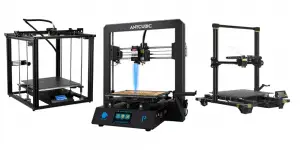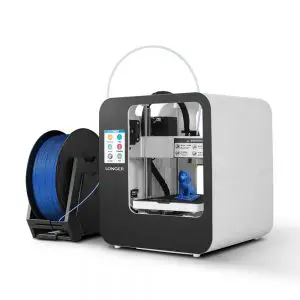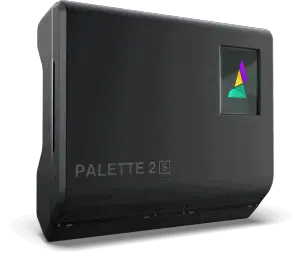The invention of 3D printing opened up a new world that was never possible in the past. Now 3D printing is being used in many industries. Many people, including children, also find it to be a fun hobby. This is one of the main advantages of 3D printing and one of the reasons why it has become so popular. However, there are also disadvantages, too. Let’s explore some of the pros and cons of 3D printing.
Benefits of 3D Printing
Before 3D printing, the only way to manufacture plastic parts was through injection forming or thermal molding processes. These technologies were not accessible to the average person, and the design and development process took a long time. They were not suitable for printing one item, or a small run of items. This is one of the main advantages of 3D printing.
Demand for 3D printers continues to grow and a wide range of models are available for professionals and hobbyists alike. Of course, this demand also caused prices to fall as manufacturers made more printers available on the market. A good 3D printer is now an affordable choice for businesses who need to do prototyping and for those who want to explore it using as a potential business manufacturing anything from cell phone cases to children’s toys.
One of the main benefits of 3D printing is the ability to model and prototype quickly. Compared to traditional plastic fabrication techniques, the ease and speed of the modeling process makes 3D printing faster and more affordable. Designing and tooling the die for injection molding can take months to get it right. With free modeling software, a beginner can easily begin making anything that they can imagine on the same day the printer arrives. For businesses who want to do prototyping, it expands the possibilities beyond what traditional plastic forming can do by making the process flexible, fast, and low-cost.
Disadvantages of 3D Printing
As miraculous as the advent of 3D printing might sound, it still has some limitations and disadvantages. When compared to traditional manufacturing processes, 3D printing is not as suitable for mass-producing parts in mass quantities at the present time. There are some professional printers that are faster and more capable of quickly producing parts, but they are still not as fast as the injection molding equipment currently available.
With injection molding, hot molten material is sprayed into a mold. It is typically used for hollow plastic parts and packaging material. A high-speed injection molding machine can 10s of thousands of items per day, depending on the length of the injection cycle. A 3D printer uses a different process, called additive manufacturing. This process uses an extruded line of molten plastic applied in layers to achieve the final process. This is a much slower process than other high-speed processes.
Another disadvantage of 3D modeling is that it has a limited size of plate for modeling. The largest printers that the average person or small business can afford can only make items that are 1-foot or less. There are 3D printers available that can 3D print furniture and houses. However, there are only a few of these in the world. On the other hand, there are injection molding machines that churn out plastic tables, chairs, and kayaks quickly, all day long. Size is a limitation for most people.
Many people get excited about 3D printing. They go out and buy a good 3d printer and spend quite a bit of money. When they get it home, they find that there is a long learning curve and that it is a highly technical piece of equipment. For the most part, 3D printing requires a certain level of technical knowledge and skill. This is especially true if you will be creating your own models.
Manufacturers realized that a demand exists for more user friendly, cheaper models. Now manufacturers have many models available that are intuitive, affordable, and simple to use. Some are even made for children as a first printer. However, many of the machines on this level are limited in the variety of materials that they can print, resolution, and size of the print plate.
Useful Things to 3D Print
Depending on the size and type of printer that you choose, you can find many useful things to 3D print. It would be an understatement to say that 3D printing is changing the world. Hospitals are using it to 3D print custom casts and prosthetics for patients. The speed of modeling and making a single item is its biggest advantage in these applications.
Many have decided to start a 3D printing business doing prototyping work for small businesses and product development. Some are even using their printers and skills to design small items to sell online. Others are using it to print components and plastic parts for a specific niche or hobby. The potential for finding useful objects to print is almost endless. The flexibility of the modeling process is its greatest advantage. The only real limit is one’s imagination.
Pros and Cons of 3D Printing
Here is a quick summary of the pros and cons of 3D printing.
Pros
- Affordable to the average person
- Fast prototyping
- Creates sturdy and lightweight parts
- Reduced waste compared to injection molding
- Ability to print on demand
- Fast production for small parts runs
- Unlimited designs can be made
- Excellent for creating custom products
- Easy to access for small businesses and individuals
- Not limited to plastics, metals are also used
- Machines available on levels from hobby to industrial
- Promotes creativity and learning in children
Cons
- Limited build size for the average machine
- Plastic items can be vulnerable to splitting under heavy loads
- Using a 3D printer requires technical knowledge
- Currently limited in the materials used
- High power consumers
- Limited to printing only a few materials
- Plastic parts might not be suitable for every application
- Can be an expensive hobby over time
Future of the Technology
Now you know some of the advantages of 3D printing and some of the disadvantages, too. Manufacturers are working to improve some of the capabilities and solve some of the current drawbacks of the technology. Here are a few of the exciting things that are in store for the 3D printing industry.
Speed
Developers are working to increase speeds on all levels of the industry. Manufacturing processes need machines that can churn out parts quickly and consistently. The ability to do this will expand the capabilities of 3D printing to perform small item runs that are not feasible using injection molding and other mass-manufacturing applications.
Size
Developments in size are expanding on both ends of the spectrum. The WinSun corporation built a printer that is large enough to print a plastic home for living. One man developed a small 3D printer that can print hearing aids. He one day hopes to be able to develop a printer that can print 3D sculptures as tiny as a human hair.
New materials
Most 3D printers use different types of plastics. Some are capable of printing with metals. Currently, prototypes exist that can print gold and glass, but these are not yet available on the market. Research is underway to expand the capabilities into many different materials and uses. Research is also underway to develop the capability for 3D printing concrete, fiber glass, steel, and other materials used in the construction industry.
Faster, Easier Modeling
Currently, most systems are based on Computer-Aided Design (CAD) software. CAD is a piece of software that is now several decades old. Improved software is now available that can work with a stylus in a way that is similar to physically working with clay or stone. SculptVR allows you do design in virtual reality and then send the model to your 3D printer.
Expanded uses
If you can think of an object or application, it is highly likely that someone is trying to develop it in this rapidly expanding industry. 3D printing is cropping up in many places that you would not expect. For instance, it is now used to create sculptures from chocolate and cheese for special occasions.
Conclusion
As you can see, 3D printing is set for expansion on all levels of the industry from consumers to professionals. It has many advantages over traditional manufacturing processes, particularly in ability to develop models and prototypes quickly. It also currently has several limitations, but designers and engineers are working to help solve many of these issues. In the future, it is expected that 3D printing will find its way into many more industries and applications. Now is an excellent time to get into the world of 3D printing as both a hobbyist and a professional.




